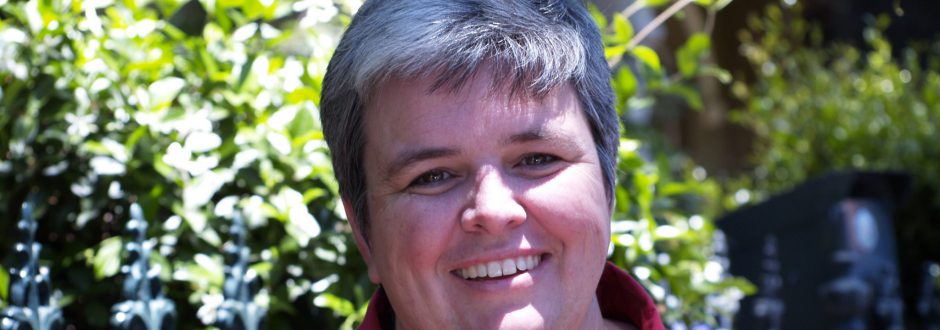When I was a child, to be told you had been “bold” meant you had done something wrong – usually that you had spoken out of turn or broken some other social convention. I don’t know if boys were ever called bold. It seemed it was a special term for outspoken girls, writes Good Samaritan Sister Meg Kahler.
BY Meg Kahler SGS
March 8, 2017 marks International Women’s Day and this year’s theme is “be bold for change”. I did blink a little at the theme. “Bold” was the word that made me think a little more.
When I was a child, to be told you had been “bold” meant you had done something wrong – usually that you had spoken out of turn or broken some other social convention. I don’t know if boys were ever called bold. It seemed it was a special term for outspoken girls. I can see why it may be a good encouragement for women – to speak up, to break some social convention that is no longer helpful, to be bold.
For me, and possibly other bold young girls, brave might be a better term. It possibly comes before being bold. There are many books, movies and women who have been brave – who have acted courageously in the face of their fear. We hear about the ones who have done this very publicly and usually at great personal cost. These are the ‘being-afraid-and-doing-it-anyway’ kind of women. We need them.
I can think of Scholastica Gibbons, Mary MacKillop, Julia Gillard, Gillian Triggs, Yassmin Abdel-Magied and the millions of women who have endured much because they are bold and brave. For these women, their bravery is a public act; it’s often reported on and can subject them to a public barrage of abuse. In our modern times, they are trolled and stalked. It costs.
But there are many, many more women who have been bold and brave in another way – those who have listened to the quiet, small voice inside and been guided by that. This is a less public form, known only by the women themselves and those closest to them. Don’t misunderstand, though. It still costs, it is just less public. These are the women who are able to make decisions about how they want to live and be in the world.
This year, the Sisters of the Good Samaritan, the congregation to which I belong, celebrate 160 years since our foundation in Sydney in 1857. I’m mindful of all those women who have become sisters because they listened to the quiet, small voice inside and were bold and brave enough to be guided by it. Many of them toiled quietly, in cities, towns, remote and rural areas, across Australia, Japan, The Philippines, East Timor and Kiribati, wherever the congregation called them. They worked as Archbishop John Bede Polding, our founder, asked:
“the Sisters are ready to teach in Schools, to visit and assist the sick in their own homes and in hospitals, to instruct ignorant persons in the faith, to conduct Orphanages, to reform the lives of penitent women and to apply themselves to every other charitable work”. (Rules of Polding, Scope and Character of the Institute, par 1)
The names of these women are known to many, not because they made headlines or because they told anyone what the voice they were faithful to was guiding them towards. These women were known because they were faithful to this call to be Good Samaritans, bold and brave when asked to work with people or go to places that were distant, frightening or difficult.
Bold and brave is not a characteristic restricted to Good Samaritans. It’s a characteristic shared by many: women who leave relationships that are abusive or violent; women who do whatever is needed to protect children; women who play in the first ever professional football competition; women who work in jobs they love but are usually done by men; women who live in distant, frightening or difficult places; and all the women who try new things because a voice inside guides them to it.
For those with a religious understanding, this small voice is the voice of God, heard through prayer and discernment, tested by the heart, shared and reflected on with those who love them and, most importantly, acted on. This kind of bold and brave implies wisdom, faith and love.
In the Old Testament, the prophet Ezekiel writes of the destruction of Jerusalem, partly due to the people not listening to the voice of God. It’s a vivid description of what can happen when the people are unable to be bold and brave.
In chapter 22, Jerusalem is described as the “bloody city” and God shows great anger towards the people – that the princes have “devoured human lives, taken the treasure and precious things, have made widows”; “they have robbed, extorted the alien, oppressed the poor and needy”. God wants someone to “repair the wall and stand in the breach so that the land and its people will not be destroyed” (Ez 22:23-30). The destruction of Jerusalem reflects the destruction of the relationship with God – a people acting without wisdom, faith and love.
God seeks those who can make a difference, who can stand against those who do wrong by the people. This is the space where bold and brave people often stand – at the junction where violence and wrong collides with peace and love. It is a battle. It requires great wisdom, faith and love to fill that gap. Many people do step into this gap and draw on their bravery and boldness to stay there.
I am pretty sure that being called “bold” as a child didn’t come with these hidden features!
